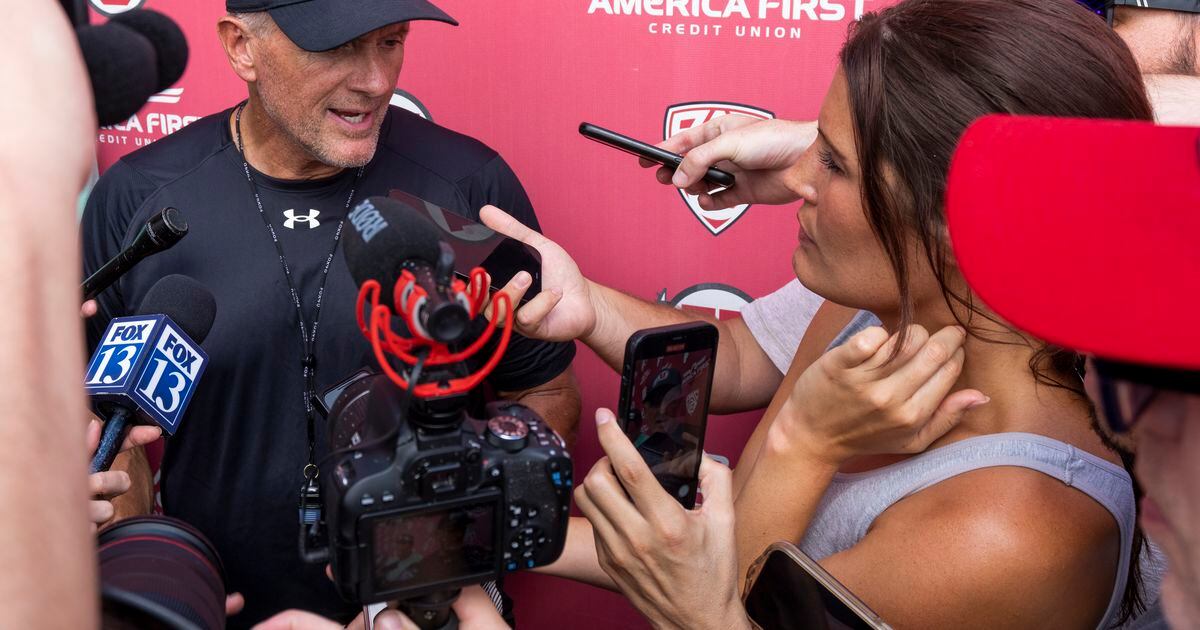Utah football coach Kyle Whittingham called this a decade ago.
Not Colorado leaving the Pac-12 exactly. But more so the idea that conference realignment would eventually spiral into a few super conferences with each commissioner acquiring as many teams as possible.
So when the Buffaloes started packing their boxes for the Big 12 last week, Whittingham wasn’t shocked. He took it as another step toward that reality.
“I thought it was trending that way for about 10 years ago. That was my impression and my opinion,” Whittingham said. “I think each year we take another step toward that. I think it is inevitable.”
Whereas other coaches around the Pac-12 chose to focus specifically on Colorado’s decision to bolt, Whittingham took the longer view on Monday.
“The timetable [for super conferences], who knows? Three years, five years, seven years,” Whittingham said. “But I believe that is the direction things are headed.”
Elsewhere around the league, certain coaches were less philosophical. In Eugene, Ducks coach Dan Lanning took a shot at Colorado’s lack of football success. The Buffaloes went 1-11 last year and haven’t won more than six games since 2016.
“Not a big reaction. I mean I’m trying to remember what they won to affect this conference. I don’t remember,” Lanning said. “You remember them winning anything? I don’t remember them winning anything.”
Whatever the rest of the league thinks about Colorado, though, it is undeniable its departure has the Pac-12 hobbled. Still without a media rights deal, the Big 12 is lurking and looking for more members to join them.
Pac-12 commissioner George Kliavkoff is supposed to present a proposed media rights deal to the remaining members as early as Tuesday, according to multiple reports. But how well that meeting goes is still yet to be seen and the future of the conference remains uncertain.
Officials from around the conference have mostly remained silent, waiting to see the numbers of a potential media rights deal. Arizona’s president told The Athletic he will wait to make decisions before he sees the numbers. Oregon State athletic director Scott Barnes said he still believes in the league — although the Beavers don’t have much choice.
“Oregon State athletics trusts that the Pac-12 will secure a media rights deal that will strongly benefit the institutions that are remaining loyal to this conference,” Barnes said in a prepared statement. “All of us at Oregon State will continue to work hard and diligently to continue the long-term membership and success of our athletic department at a national level.”

































